Kiluanji Kia Henda’s rampancy – from the Triennial of Guangzhou to Experimenta Design: two projects
Kiluanji Kia Henda has displayed his art internationally – from Guangzhou to Cape Town, from Nairobi to Venice – which decouples his work from the exclusive legitimacy granted by Western contemporary art capitals. Another unique trait of his trajectory is that so far, his work has not been presented and sanctioned by the “small” world of its former “metropole”, Lisbon. As an Angolan artist, and therefore, from an independent country today and once a Portuguese colony, his art world’s has been extraneous to a set of cultural policies that take Portuguese-as-connection, and which rely on a closed circuit showcasing of art and its artists, traveling between ex-colonies and the ex-metropole. In Portugal, Kiluanji Kia Henda has only had one exhibit, and outside usual venues, “Ngola Bar” at the Sines Art Center (2007). He now brings to Lisbon, on the occasion of Experimenta Design 2009 and the exhibit “Luanda: Anatomy of Velocity,” a new project (“Transit” and “Un recuerdo para ti”, 2009). We suggest, here, to read one of the photographs Kiluanji brings to Lisbon – “Transit” – alongside a photo installation of “Icarus 13,” shown at the 2008 Triennial of Guangzhou, in China. In both projects an image of colonialism is conveyed, inasmuch as of post-colonialism in Africa. But that which raises the reading that follows is the fact that by looking to amend history, we come to realize that “all history as reconstruction of the past is, obviously a myth” (Jan Vansina).
Icarus 13 reaches the sun
The project “Icarus 13,” selected by Stina Edblom, research-curator for the Triennial of Guangzhou’s “Farewell to Postcolonialism” (2), presents the first space journey to the sun, led by an Angolan mission. It consists of an installation – eight photographs and a mockup of the spaceship – which documents all preparations for take-off: from a last inspection of the machinery, a team of workers, a general view of the shipyard, including the light beams from the ship. The text that accompanies this work, intentionally anonymous, concludes with a “to be continued” and leaves open the mission’s unfolding.
Just as the very installation ostentatiously makes explicit, the mission Icarus 13 did not take place historically, and the workers in the photographs have never fine-tuned the spaceship’s engines. This way, “Icarus 13” generates perplexity with fun and irony. The outcome it provokes has an anthropological intensity and nature, that is, it mixes historical events, political or even mythological, also featured in utopian narratives. “Icarus 13” immediately evokes the Greek anti-hero that loses his wings as he approaches the sun, while at the same time intelligently taking inspiration from jokes à la Samora Machel, which would provoke widespread laughter from the audience: “Africans will get to the Sun, but during the night so that they won’t get burned.” Beyond the image’s paltriness, a bridge is established, therefore, between the myth and the comical.
The life that animates the installation “Icarus 13” is that which subtly insinuates itself through the cracks of meaning to which these images lent themselves to, when carefully selected and edited. Thus, the installation oscillates between manifest fiction (the solar mission) and reality, but a reality composed both by politico-civilizational positionings (Machel’s joke, which can be interpreted as proximity/distancing from Africa vis à vis the West) as well as classical reminiscences (Icarus), but also a reality deeply rooted in the everyday life, intrinsically prosaic and, at last, an artistic reality in which, fatally, the artistic work partakes.
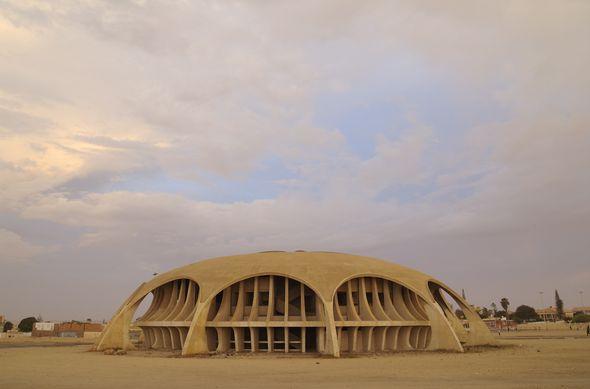 Astronomical observatory
Astronomical observatory
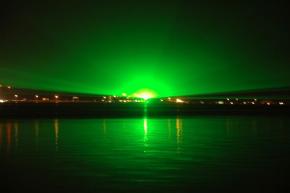
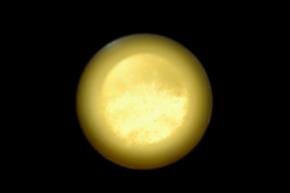 The sun from the spaceview
The sun from the spaceview
The workers fine-tuning the equipment of Icarus 13 the spaceship are, after all, construction workers of Luanda that Kiluanji photographed during incursions at work. “Icarus 13” “is” an unfinished mausoleum left behind by the Russians in Angola, where it is said to rest the final remains of Agostinho Neto [the first President of independent Angola]. What is said to be an “Astronomy Observatory,” for example, “is” a cinema theatre in the province of Namibe that decolonization left unfinished. The shuttle’s take-off illumination “is” the image captured during the celebration of Angola’s “Palanca Negras” qualifying victory for the 2006 soccer World Cup, etc (3).
Kia Henda shoots in different directions and places himself at the center of a speculative field calibrated by the synopsis of this installation, which reads: “As a ball of fire this odyssey to the Sun needed imagination as its fuel”, where imagination is compared to a muscle working on the continuous re-disposition of images, between fiction and reality.
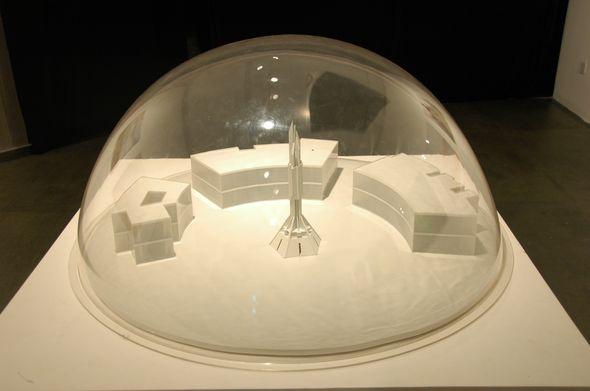
Effectively, “Icarus 13” reshuffles history, plays the colonial past “off key”, Africans stereotypes and the imperial rampancy alike, but the interest of this “program,” that which makes it destabilizing, is the fact that it operates on the oscillating ground that goes from document to fiction, one of the central questions of contemporary research.
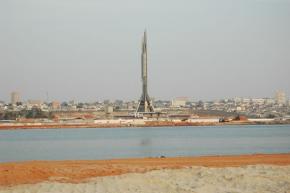 Icarus 13, installation spaceship
Icarus 13, installation spaceship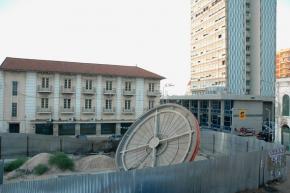 End of mission
End of mission
In “Transit”
“Transit” takes form within a partnership between Experimenta Design and Sindika Dokolo Foundation “Luanda: Anatomia da Velocidade”, and in the context of an enthusiastic rapprochement between the Triennial of Luanda 2010 and other Portuguese projects, as in the case of the Triennial of Architecture of Lisbon.
At the Braamcamp Palace, one of Experimenta09 locations, Kiluanji Kia Henda places face to face two moments of colonialism. On the one hand, an evocation, a memento of sorts, of an Angolan’s trip to Russia (the triptych “Un recuerdo para ti”), and, on the other, a photograph set up on a light box that represents the statue of P. Dias de Novais, Bartolomeu Dias’ grandson, and first Governor of present-day Luanda, entitled “Transit”. I will detain myself on this last image.
 Transit | Fotografia em caixa de luz | 243cmx55cm | 2009
Transit | Fotografia em caixa de luz | 243cmx55cm | 2009
By way of the Governor’s image, Kiluanji suggests a bridge between the maritime expansion, when the Portuguese first reached the region that corresponds to Angola today, and the contemporary moment. The title is implied on the image. Kiluanji “captured” the statue when it was being disassembled in the Sao Miguel Fort. We see it in transit against a red construction fencing. This is its current position.
The fragmentation and segmentation of the image find, this way, a close relationship with our contemporary way of seeing (it brings to mind the assembly line, serialization, cartoons, etc). Not only do we see things, the objects, but also its process, the space lying between things. If on the one hand the image’s fragmentation suggests the way in which these objects were transported (originally by boat, in individual pieces), on the other hand, its segmented organization in a box of light imbues the project with the sculptural character of the object it refers to, the statue of Dias de Novais. But that which truly makes it “speak” out loud is the fact that the image is placed horizontally, prostrated on the ground, lies dead and colds down. In fact, displaying horizontally an image we have grown used to seeing vertically allows the constitution of a critical device, in two ways. It is a bifurcated route, with distinct horizons.
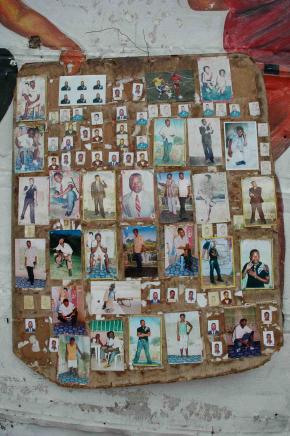
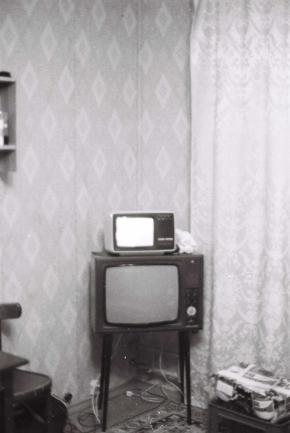 Un recuerdo para ti | fotografia sobre alumínio | 120cmx80cm | 2009
Un recuerdo para ti | fotografia sobre alumínio | 120cmx80cm | 2009
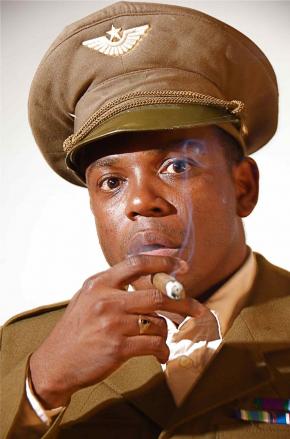
In one sense, it suggests to the spectator that which he does not know how to see, as a way of saying: “Here is the time of Portuguese colonialism finally severed”, to which it is not extraneous the fact that historically, acts of iconoclasm and counter-power have been practiced in the images’ faces, nor the fact that Kiluanji as Angolan is in Lisbon to talk about a Portuguese past, and that is assumed as a “permissive paradox” (Nathalie Heinich), that is, the power integrates its critic (or transgression) in the moment at which it appears, before even being sanctioned by the public, exposing it in the institutional context of contemporary art.
In the second sense, a short circuit is produced through the assemblage and occupation of elements vaguely or professedly strange (in the line of “Icarus 13”), through the existence of destabilizing relations between images and its memories. Seen briefly, by placing the statue of commemorative type horizontally, unlike monuments, obelisk, patterns, menhirs, or sculpture in the logic of plinth, Kiluanji reflects on the conditions under which contemporary sculpture conducts an aesthetic rupture with the monument’s logic (what Damián Ortega accomplishes magnificently): to fragment an image is, in this case, a reminder of a canon’s fragility. To reinforce this operation K. Kia Henda encloses the image of P. Dias de Novais in a clear geometry: the rectangle’s dimensions (98.4 x 19.7 in), and the height at which it is exposed remind some examples of minimalist sculpture (for example Donald Judd). The box works like a container where the image is deposited, just like a recumbent, the last address.
in the sort of representation that, in Portuguese art, was connected to the modernized academicism of the New State (Estado Novo). By rescuing for contemporaneity this image and implicating it in these procedures, we “reread” Rosalin Krauss and the notion of “sculpture in the expanded field” (6) (R. Krauss: 1979). Krauss explains that the logic of sculpture is inseparable of the monument’s logic, and that the artistic movements of the 60s (Krauss yields the genesis of this process to the historical vanguards), symptomatically contemporary to the first African independences, operate a rupture of aesthetic order.
It is in this bifurcation that “Transit” evokes that Kiluanji reinforce the meaning of images, choosing the path that led to a fragmentary and sequenced perception of reality, that supported the passage of a vertical principle (debtor to all sculpture-monument relationship) towards a horizontal principle. With no pretension at reconstructing history, but looking at it in transit.
Previoulsy published in ArteCapital